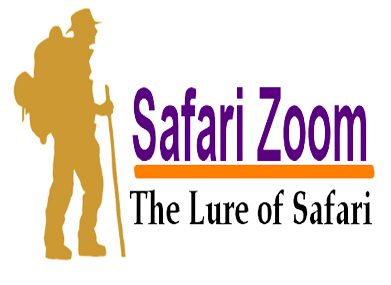Utilizing Digital Mapping Technologies for Sustainable Travel
In the age of technology, digital mapping has emerged as a powerful tool in promoting sustainable travel. With the increasing awareness of environmental conservation and responsible tourism, travelers and industry stakeholders are leveraging digital mapping technologies to minimize ecological footprints, support local communities, and enhance the overall travel experience. This article explores how digital mapping technologies are being utilized to foster sustainable travel practices.
For a wide range of digital maps and travel guides, check out lonely Planet’s collection here
The Rise of Digital Mapping in Tourism
Evolution of Mapping Technologies
Digital mapping technologies have evolved significantly over the past decade. From simple GPS systems to sophisticated mapping applications, these technologies now offer comprehensive solutions that integrate real-time data, user-generated content, and advanced analytics. This evolution has transformed how we navigate and interact with our surroundings, making travel more efficient and informed.
Importance in Sustainable Travel
The importance of digital mapping in sustainable travel lies in its ability to provide detailed, accurate, and real-time information. This information helps travelers make eco-conscious decisions, supports the promotion of local businesses, and facilitates the preservation of natural and cultural heritage sites. By offering insights into sustainable practices and highlighting eco-friendly options, digital mapping technologies are instrumental in driving responsible tourism.
Benefits of Digital Mapping for Sustainable Travel
Reducing Environmental Impact
Digital maps help reduce environmental impact by providing optimal routes for travel, thereby emissions. They offer alternatives such as public transportation options, walking routes, and cycling paths. Applications like Google Maps and Waze provide real-time traffic updates, helping travelers avoid congested areas and reduce idling time.
Supporting Local Economies
Digital mapping platforms can highlight local businesses, cultural sites, and community projects. By directing travelers to local eateries, markets, and accommodations, these platforms help sustain local economies. Apps like TripAdvisor and Yelp incorporate maps that showcase locally-owned businesses, encouraging tourists to support the local economy rather than large, international chains.
Promoting Conservation Efforts
Digital maps can promote conservation efforts by highlighting protected areas, national parks, and conservation projects. They often include information on the ecological significance of these areas and guidelines on how to visit responsibly. Apps like AllTrails and Komoot offer maps of hiking and biking trails that prioritize environmental preservation and provide tips on low-impact travel practices.
Key Features of Digital Mapping Technologies for Sustainable Travel
Real-Time Data Integration
One of the most significant advantages of digital mapping technologies is the integration of real-time data. This includes traffic updates, weather conditions, and alerts about road closures or natural events. Real-time data allows travelers to adapt their plans quickly, avoiding potential environmental and safety hazards.
User-Generated Content
Platforms that incorporate user-generated content, such as reviews, photos, and travel tips, enhance the reliability and richness of the information provided. This content helps travelers make informed decisions about destinations and activities, often highlighting sustainable options that might not be well-known.
Offline Capabilities
Many digital mapping applications now offer offline capabilities, allowing travelers to download maps and use them without internet access. This feature is particularly useful in remote or rural areas where connectivity is limited. Offline maps reduce the need for printed materials, aligning with sustainable travel practices by minimizing paper waste.
Popular Digital Mapping Tools for Sustainable Travel
Google Maps
Google Maps is one of the most widely used mapping tools. It offers comprehensive route planning, public transit information, and real-time traffic updates. Google Maps also highlights eco-friendly options, such as bike-sharing stations and electric vehicle charging points, making it a valuable tool for sustainable travelers.
Maps.me
Maps.me is a popular app for offline navigation. It provides detailed maps that can be downloaded and used without an internet connection. Maps.me is especially useful for hikers and backpackers, offering topographic details and information on trails and natural landmarks.
AllTrails
AllTrails is a dedicated app for outdoor enthusiasts. It features a vast database of hiking, biking, and running trails, complete with user reviews, photos, and GPS navigation. AllTrails emphasizes sustainability by promoting responsible outdoor practices and highlighting less-traveled routes to reduce environmental impact.
Komoot
Komoot is another excellent app for outdoor activities. It offers detailed route planning for hiking, biking, and other outdoor sports. Komoot provides information on trail difficulty, terrain, and scenic spots, helping users choose routes that match their skill level and interests while promoting sustainable outdoor recreation.
Case Studies: Digital Mapping in Action
Sustainable Travel in Costa Rica
Costa Rica, renowned for its commitment to sustainability, utilizes digital mapping technologies to promote eco-tourism. The Costa Rican Tourism Institute has developed interactive maps that highlight eco-friendly accommodations, national parks, and conservation areas. These maps guide tourists to sustainable travel options and educate them about the country’s biodiversity and conservation efforts.
Eco-Friendly Tourism in Norway
Norway’s tourism authorities use digital maps to promote sustainable travel routes and eco-friendly attractions. Apps like Visit Norway provide detailed maps of hiking and cycling routes, fjord tours, and cultural sites. These maps include information on sustainable practices and encourage tourists to explore off-the-beaten-path destinations, reducing the strain on popular tourist spots.
Future Trends in Digital Mapping for Sustainable Travel
Integration with Augmented Reality (AR)
The integration of augmented reality (AR) with digital mapping is poised to revolutionize sustainable travel. AR can provide interactive, immersive experiences that educate travelers about the environmental and cultural significance of their surroundings. This technology can guide tourists through eco-friendly routes and highlight sustainable practices in real-time.
Enhanced Personalization
Future digital mapping technologies will offer enhanced personalization, tailoring recommendations based on individual preferences and sustainable travel goals. This could include suggesting routes with the lowest environmental impact, recommending local eco-friendly businesses, and providing personalized tips for reducing one’s carbon footprint.
Increased Collaboration with Environmental Organizations
Collaboration between digital mapping platforms and environmental organizations will likely increase, resulting in more comprehensive and accurate maps. These partnerships can help ensure that maps are continuously updated with the latest information on conservation efforts, protected areas, and sustainable travel options.
Conclusion
Digital mapping technologies are pivotal in advancing sustainable travel practices. By providing real-time data, promoting local economies, and supporting conservation efforts, these technologies empower travelers to make eco-conscious decisions. As digital mapping continues to evolve, it will play an increasingly vital role in shaping a more sustainable and responsible tourism industry.





